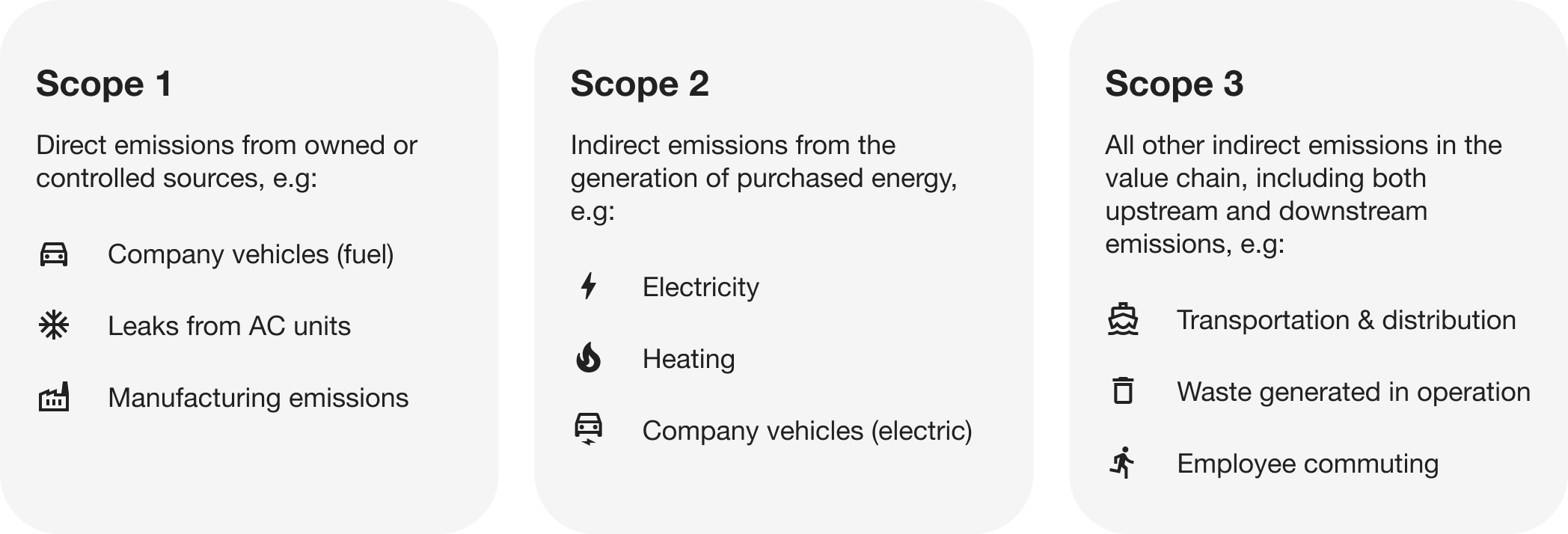

So, your company has made a commitment to reach net zero by 2030.
Excellent work.
Now, how do you actually go about reaching that net zero goal?
In this article we look at 4 key steps on the journey to net zero carbon emissions as a business:
- Step 1: Measure your emissions
- Step 2: Reduce emissions as much as possible
- Step 3: Address any remaining emissions using carbon removal credits
- Step 4: Don't stop here – find ways to go beyond net zero
Step 1: Measure your emissions
The first step in a net zero journey is to find out where you currently stand in terms of environmental impact. That means using a reputable carbon calculator to measure the carbon emissions from all of your business activities – across scope 1, 2, and 3.

Step 2: Reduce as much as possible
Using your emission measurements as your baseline, the next step is to identify where you can make reductions to your company’s carbon emissions, and make targets to reduce.
To align with the global goal of net zero emissions, these reductions need to be deep – typically a business will need to reduce their emissions by 90-95% to be in line with climate science (Science Based Targets).
To do this, we'd highly recommend following an established a reputable framework such as the Corporate Net Zero Standard by Science Based Targets (SBTi) to ensure that your targets are actually aligned with what's needed.
Subscribe for the latest insights into driving climate positivity
Step 3: Remove any remaining
No matter how much you reduce your carbon footprint, there will inevitably still be some unavoidable carbon emissions from your business operations.
To truly reach net zero, you’ll need to neutralise those emissions using carbon removal.
That means taking your remaining emissions and purchasing an equivalent amount of high-quality carbon credits in carbon removal projects – such as afforestation, enhanced weathering, or direct air capture to balance out the emissions your company is still responsible for.
Step 4: Look beyond net zero
Steps 1-3 have focused on how a business can achieve a net zero emissions target, but it’s also important (in fact, more important) for businesses to look beyond net zero.
Net zero by 2050 is a global target, initially set as part of the Paris Agreement. We all need to be contributing towards that target, but setting our own net zero emissions targets usually isn’t the best way to contribute.
Most businesses have a small carbon footprint compared to our total global greenhouse gas emissions, so a business reaching net zero emissions themselves doesn’t do much to move the needle on climate change.
But, there are other, bigger ways that businesses can contribute to the global target of net zero.
Particularly, for businesses we see the biggest areas for potential climate impact as:
- Committing to making financial contributions to early-stage, high-impact carbon removals projects – regardless of your own carbon footprint
- Using your network and influence to have an exponential climate impact, especially identifying ways to embed climate impact into your product or service.
A couple of examples:
💳 A payments company could offer merchants a customisable green payments option which makes positive impact with every purchase – they control the choice of who pays, how much, which projects to support, the checkout look and feel, and more.
🚢 A logistics platform could enable merchants to calculate the carbon emissions of different routes and modes of transport so that product shipping results in as low emissions as possible – with emissions automatically offset at the time of booking.
In both of these instances, rather than just one company cutting their carbon emissions in a small way, a whole network of merchants and/or customers are working together to support the climate solutions reducing emissions and removing carbon from the atmosphere.
In this way, by taking an impact-first approach to climate initiatives, the positive impact of that company is multiplied many times over.

Readers also liked
Readers also liked

Subscribe for emissions intelligence insights
Get the latest updates in the world of carbon tracking, accounting, reporting, and offsetting direct to your inbox.


